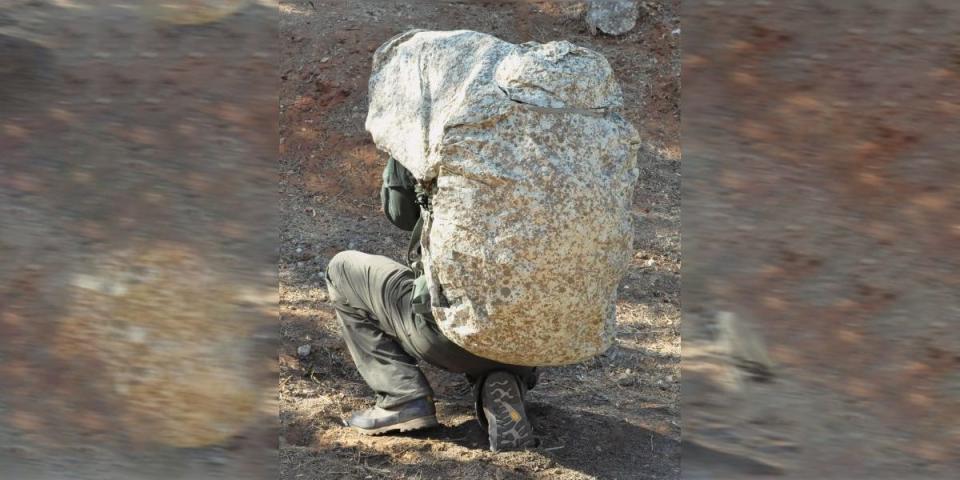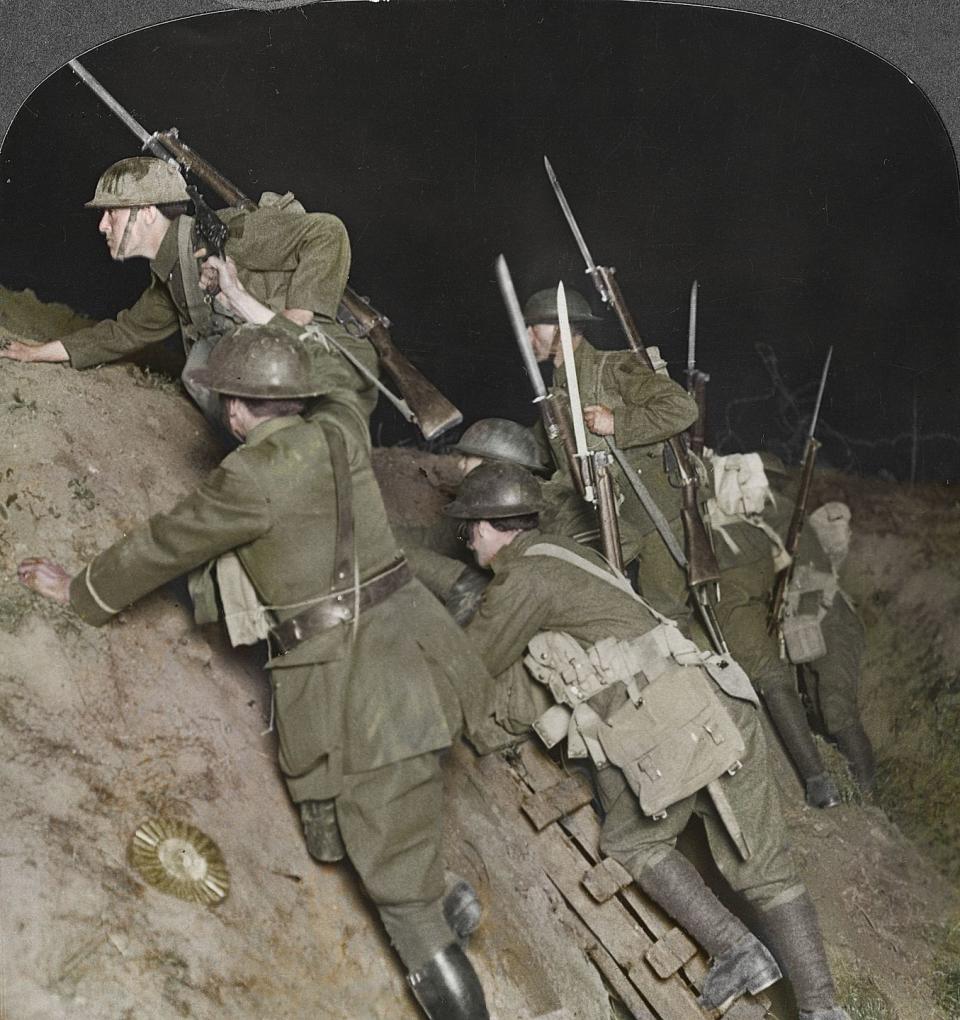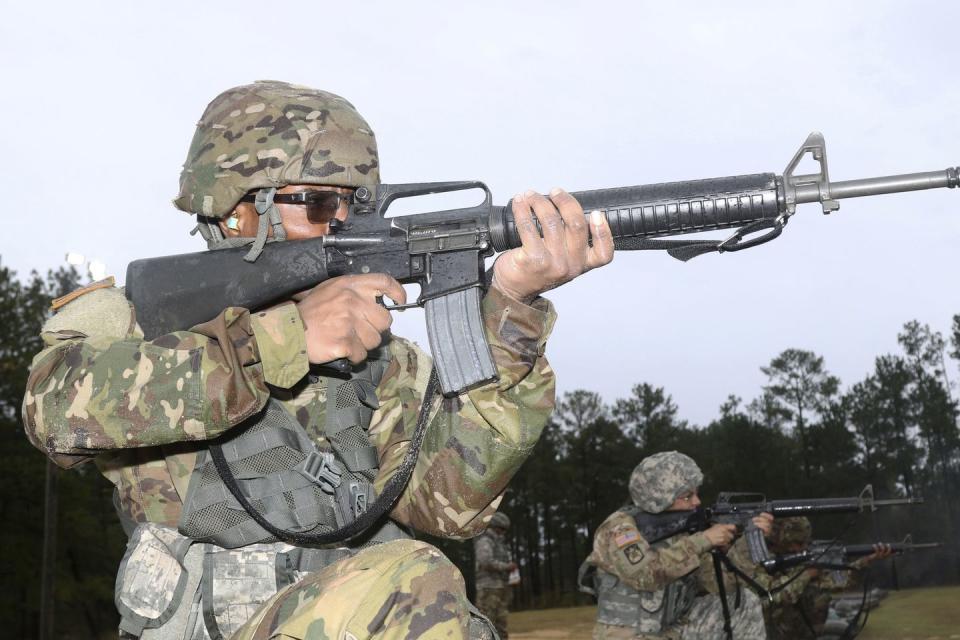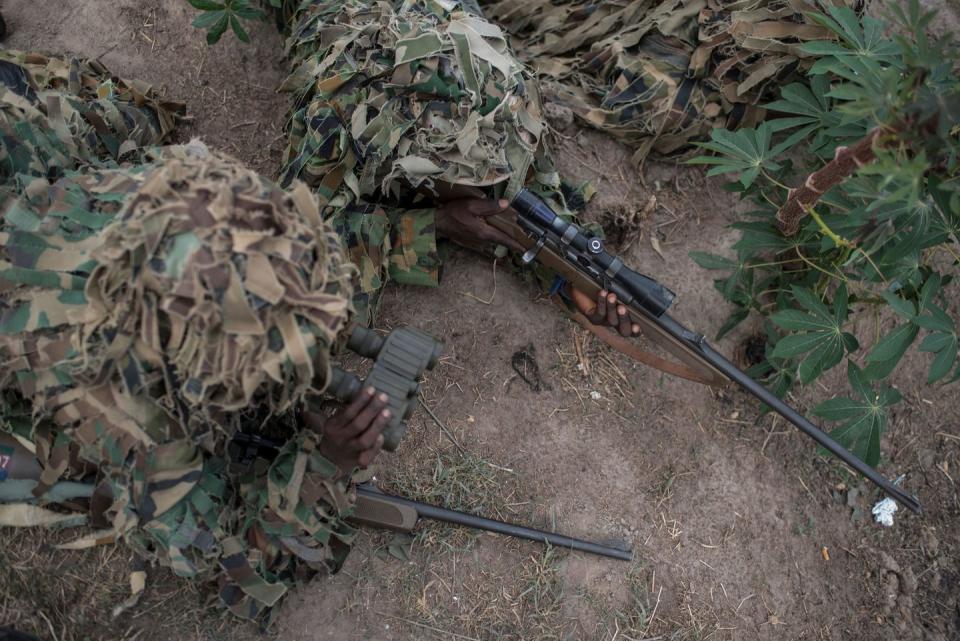Israel Found a Way to Make Soldiers Invisible

Picture this: A special operations team has set up an observation post on a rocky hillside in enemy territory. The team’s mission: provide surveillance of the terrorists planning an attack from their camp below, and then target the commander once preparations have reached their peak.
Down in the camp, the commander is confident the valley above is free of danger. There’s little cover, and he’s outfitted his sentries with night-vision goggles that would light up with the heat signature of any threats. The special ops troops have covered themselves with camouflage that not only blends in with the rock-strewn hillside, but hides their telltale heat. The team is difficult to see during the daytime, but impossible to spot at night.
Before the attack is set to commence, the commander calls his fighters before him. As he begins to speak, a pair of crosshairs a half-mile away drifts over his silhouette. The sniper exhales and gently squeezes the trigger.
This scenario could become possible thanks to a new camouflage material, Kit 300, developed by Israeli defense contractor Polaris Solutions. Kit 300 is a “thermal visual concealment”—essentially a sheet that uses advanced materials to block a soldier’s body heat. This renders them invisible to night-vision sensors, which in recent decades have become available to terrorist groups.
The first American night-vision device, the M3 Infrared, debuted in the final days of World War II. Early gadgets typically paired an infrared spotlight with an image amplifier. The infrared light was invisible to the naked eye, but would illuminate a target for the image amplifier. Later scopes did away with the infrared light source entirely, instead amplifying ambient light, particularly moonlight.
In the 1980s, thermal imagers heralded a revolution in night-fighting capability. By detecting small differences in heat in their field of view, thermal imagers show a person as defined by their radiated body heat, with the hands, face, and other exposed body parts shining brightly. A tank fighting at night would be seen via its engine panels.
Through the 1990s, thermal imagers used to confer a huge edge on the armies of the countries who had the technology. But as the tech advanced, it became easier to acquire. After the 2006 war between Israel and Hezbollah, Israel complained that night vision sold by Britain and Italy to Iran to stem the flow of drugs was discovered in the possession of the terrorist group. By 2017, Iran was reportedly manufacturing thermal imagers of its own.
In 2018, when the top U.S. commander in Afghanistan, Gen. John Nicholson, accused Russia of giving aid to the Taliban, senior Afghan police officers and military figures said night- vision goggles were part of the gear that Russia supplied.
Kit 300 camouflage could give NATO and its allies their nighttime advantage back. Polaris is tight-lipped about exactly what goes into the Kit 300 sheet, stating only that it consists of “microfibres, metals, and polymers.” The foil-like material can be formed into rock-shaped structures for soldiers to hide behind. A large sheet of the material can hide vehicles as large as a Hummer.
Roughly the size of a twin bedsheet, a Kit 300 sheet weighs around one pound and compresses into a small roll. It’s also strong enough to be used as a litter to carry injured soldiers. Plus, the sheet is reportedly waterproof and has been tested in rain and high heat.
While armies with thermal-imaging devices once held a trump card over their enemies, they must continue to develop countermeasures of their own to survive. Devices like the Kit 300 will allow soldiers to once again disappear.
A Brief History of Solider Camo

Camouflage Uniforms: For centuries, armies used brightly colored uniforms to control troops, allowing leaders to organize their infantry into tightly packed columns that delivered volleys of firepower.
By World War I, as small arms improved, armies sought more subdued uniforms and began experimenting with darker patterns (brown, khaki) to blend in with the dirt of trench warfare. By WWII, U.S. troops in the Pacific wore camouflage patterns to blend in with jungle vegetation.

Operational Camouflage Pattern (OCP): In 2015, the U.S. Army abandoned the pixelated grays and whites of the Universal Camouflage Pattern in favor of a new scheme. Scorpion W2, developed by the Army’s Natick Soldier Systems Center, was a return to the dashes and flashes of subdued colors of previous army camouflage.
In 2021, Scorpion, or Operational Camouflage Pattern, became the official duty uniform of the Army, Air Force, and Space Force.

Ghillie Suits: In the 19th century, Scottish gamekeepers constructed these loose suits of dyed strips of fabrics to blend in with their surroundings and catch poachers. Lovat Scouts, the first snipers employed by the British Army, adopted and used the suits during the Boer War.
The shaggy, dark suits break up the wearer’s profile to remain undetected. Today’s U.S. Army snipers use specialized suits called the Improved Ghillie System that consist of sleeves, leggings, veil, and a cape.
You Might Also Like
